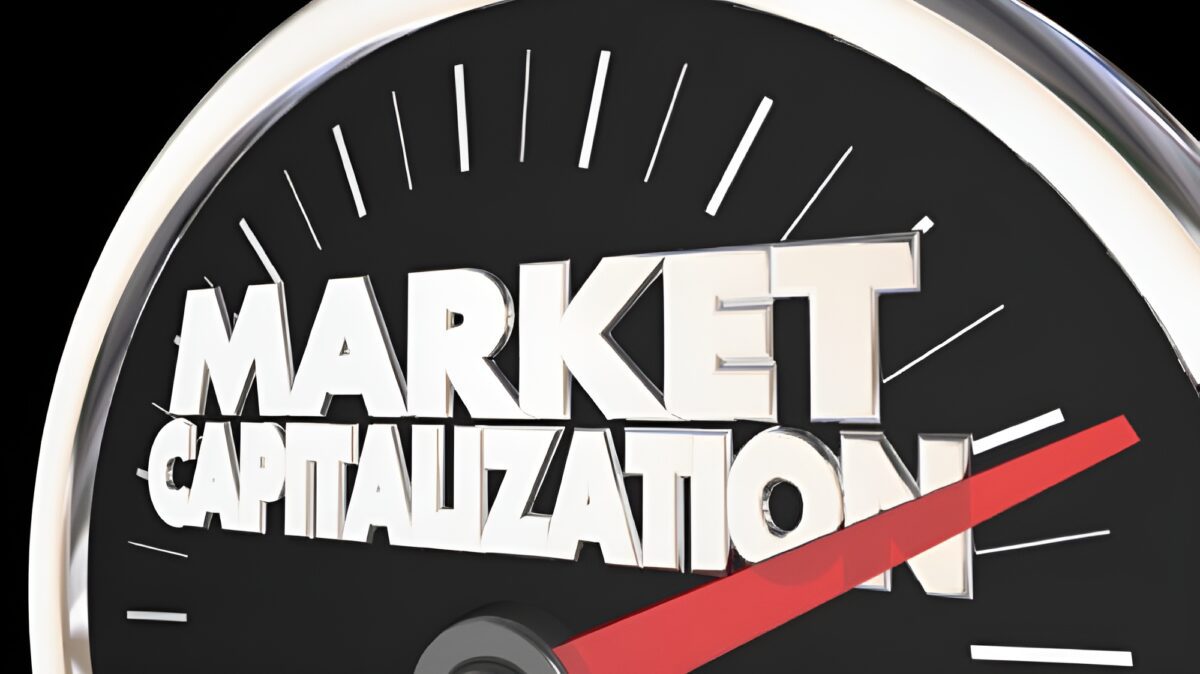
Understanding Market Capitalization: A Comprehensive Guide
Contents
- 1 Market cap what is
- 1.1 Understanding Market Capitalization: A Comprehensive Guide
- 1.1.1 What Is Market Capitalization?
- 1.1.2 Why Is Market Capitalization Important?
- 1.1.3 Types of Market Capitalization
- 1.1.4 How Market Capitalization Affects Investment Decisions
- 1.1.5 Market Capitalization and Stock Price Fluctuations
- 1.1.6 Conclusion
- 1.1.7 FAQs:
- 1.1.7.1 What does market capitalization tell us about a company?
- 1.1.7.2 How is market capitalization calculated?
- 1.1.7.3 What is the difference between large-cap, mid-cap, and small-cap?
- 1.1.7.4 Why is market cap important for investors?
- 1.1.7.5 How does market capitalization affect stock prices?
- 1.1.7.6 What role does market cap play in index funds and ETFs?
- 1.1.7.7 Can market cap indicate a company’s growth potential?
- 1.1.7.8 How should investors use market cap in portfolio diversification?
- 1.1.7.9 Does a higher market cap always mean a better investment?
- 1.1.7.10 How often does market capitalization change?
- 1.2 Market cap what is
- 1.3 Avoid These Costly Mistakes in Stock Trading—A Must-Read Guide for Every Investor
- 1.1 Understanding Market Capitalization: A Comprehensive Guide
Market cap what is
Understanding Market Capitalization: A Comprehensive Guide
Ever wondered what “market capitalization” means when you’re reading about stocks or financial news? Market capitalization, or “market cap,” is a fundamental concept in the world of finance and investing. It helps investors assess the value of a company and understand its position in the market. But what exactly is market capitalization, and why is it so crucial? Let’s break it down.


What Is Market Capitalization?
Market capitalization refers to the total market value of a company’s outstanding shares of stock. It is a measure used to determine a company’s size, financial stability, and investment potential. The formula to calculate market capitalization is:
Market Cap=Share Price×Number of Outstanding Shares\text{Market Cap} = \text{Share Price} \times \text{Number of Outstanding Shares}
For example: If a company has 1 million shares outstanding, and each share is worth $50, the market cap would be:
Market Cap=1,000,000 shares×$50 per share=$50,000,000\text{Market Cap} = 1,000,000 \text{ shares} \times \$50 \text{ per share} = \$50,000,000


Why Is Market Capitalization Important?
Understanding market capitalization is crucial for several reasons:
- Company Size and Stability: Market cap provides a snapshot of a company’s size and stability. Larger companies, typically with higher market caps, are often seen as more stable and less volatile compared to smaller companies.
- Investment Risk: Market cap helps investors gauge the risk associated with investing in a company. Generally, smaller companies (small-cap) might offer higher growth potential but come with higher risk, while larger companies (large-cap) tend to be more stable but may offer slower growth.
- Stock Analysis and Comparisons: Market cap is used to compare companies within the same industry. Investors often use market cap to identify which companies are leading in their sector and which ones are lagging.
- Market Position: A company’s market cap can indicate its market position and competitive edge. For instance, a company with a high market cap is often a leader in its industry, while a lower market cap might suggest a smaller or emerging player.


Types of Market Capitalization
Market capitalization is commonly classified into three main categories:
- Large-Cap: Companies with a market cap of $10 billion or more. These companies are usually well-established, financially stable, and have a significant market presence. Examples include Apple, Microsoft, and Google.
- Mid-Cap: Companies with a market cap between $2 billion and $10 billion. These companies are often in a growth phase and can offer a balance between risk and reward.
- Small-Cap: Companies with a market cap of less than $2 billion. Small-cap companies can offer high growth potential but come with higher volatility and risk.


How Market Capitalization Affects Investment Decisions
- Diversification: Investors use market cap to diversify their portfolios. By including a mix of large-cap, mid-cap, and small-cap stocks, investors can balance their risk and reward.
- Growth vs. Value Investing: Market cap helps differentiate between growth and value stocks. Growth investors may focus on small-cap and mid-cap stocks with high growth potential, while value investors might prefer large-cap stocks that are undervalued.
- Index Funds and ETFs: Many index funds and exchange-traded funds (ETFs) are designed based on market cap. For example, the S&P 500 index includes large-cap companies, while other indices may focus on mid-cap or small-cap stocks.


Market Capitalization and Stock Price Fluctuations
It’s important to note that market cap can fluctuate with changes in the stock price. If a company’s stock price increases, its market cap rises, and vice versa. This fluctuation can impact investor perceptions and the company’s market position.
For example: If the stock price of our example company rises from $50 to $60, the new market cap would be:
New Market Cap=1,000,000 shares×$60 per share=$60,000,000\text{New Market Cap} = 1,000,000 \text{ shares} \times \$60 \text{ per share} = \$60,000,000


Conclusion
Market capitalization is a vital metric in the world of investing, offering insights into a company’s size, stability, and investment potential. By understanding market cap, investors can make more informed decisions, assess risk, and create a well-balanced portfolio. Whether you’re a seasoned investor or just starting, grasping the concept of market capitalization is essential for navigating the stock market effectively.
FAQs:
-
What does market capitalization tell us about a company?
A. Market capitalization indicates a company’s total value and size, which can reflect its stability and market position.
-
How is market capitalization calculated?
A. Market cap is calculated by multiplying the share price by the number of outstanding shares.
-
What is the difference between large-cap, mid-cap, and small-cap?
A. Large-cap companies have a market cap of $10 billion or more, mid-cap companies range from $2 billion to $10 billion, and small-cap companies have a market cap of less than $2 billion.
-
Why is market cap important for investors?
A. Market cap helps investors assess risk, compare companies, and make decisions about diversification.
-
How does market capitalization affect stock prices?
A. Market cap fluctuates with stock prices; an increase in stock price raises the market cap, and a decrease lowers it.
-
What role does market cap play in index funds and ETFs?
A. Many index funds and ETFs are based on market cap, focusing on large-cap, mid-cap, or small-cap stocks depending on the fund’s objectives.
-
Can market cap indicate a company’s growth potential?
A. Yes, smaller companies (small-cap) often have higher growth potential, while larger companies (large-cap) tend to be more stable.
-
How should investors use market cap in portfolio diversification?
A. Investors use market cap to include a mix of large-cap, mid-cap, and small-cap stocks to balance risk and reward.
-
Does a higher market cap always mean a better investment?
A. Not necessarily; while large-cap companies are often more stable, smaller companies might offer higher growth potential.
-
How often does market capitalization change?
A. Market cap changes frequently with fluctuations in stock prices, reflecting the current market value of a company.





















3 comments